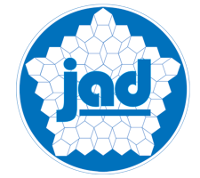JSL/English Structures Comparison (Part 1)
Many people who are not yet familiar with sign language are surprised to find out that sign languages are true languages with a grammar distinct from that of spoken languages. Jamaican Sign Language is often misconstrued as a sort of English on the hands or in the air. Linguistic analyses of sign languages all around the world show, however, that the sign languages of any region are most often quite unrelated to whatever spoken language is present. You may wonder then what some of the features are that make Jamaican Sign Language (JSL) and English two distinct languages. It’s not as simple as the difference between making sounds and making gestures. Let’s take a look at one interesting difference.
Prepositions in English are words such as in, on, over, and behind. We generally use these words to show where things are located or oriented. A typical sentence in English that uses a preposition might be: The cat is lying on the table.
To create similar meaning in JSL, the sentence would be dramatically different. JSL takes advantage of the spatial nature of signing and uses a handshape to indicate where something is located in relationship to people, places, and things. This is one function of a grammatical feature known as a classifier. Spoken languages may use classifiers as well, but usually require syllables or words to be added to a sentence. English is not one of the languages that uses this complex tool, however.
So how might the sentence be produced in JSL? To express the same idea as the English example given previously, a deaf person might first set up the table in space by signing: TABLE FLAT-SURFACE. A flat left hand facing downward would be used to indicate that surface. Then the sign for CAT would be made. The right hand would then be used in the shape of a bent V to represent a small animal. This handshape would then be placed on top of the FLAT-SURFACE sign to show that the cat was located on the table. So the final signed production might be: TABLE Classifier: FLAT-SURFACE, CAT Classifier: SMALL-ANIMAL Classifier: SMALL-ANIMAL-on-top-of-FLAT-SURFACE. This sentence uses five signs, three of which are classifiers.
One interesting feature of sign language classifiers is that with the SMALL-ANIMAL or similar handshapes, a signer can also show what area of the table the cat is lying on. Depending on the orientation of the palm of that SMALL-ANIMAL handshape, the signer could also show if the cat was on its paws, its side, or belly up! In JSL, you could show that one or all of the paws were moving and to a certain extent in what manner. Even more grammatical information could be included by adverbs that might be shown on the mouth. If the sign SMALL-ANIMAL was placed on the FLAT-SURFACE at the same time the tongue was protruding slightly from the signers mouth, this would indicate the manner in which the cat is lying. It would translate in English to the cat lying lazily or apathetically or indifferently. So with just five signs being made with the hands, and a movement being made by the mouth, a great deal more information can be expressed than in the six word English sentence: The cat is lying on the table.
This is just one example, but there are many other differences between Jamaican Sign Language and English. Some are known; others are yet to be explored. Hopefully reading this article has piqued your interested and you will continue your study of Jamaican Sign Language ardently, with the ultimate hope of making communication with Deaf people more fluent and clear.
-- Dawn Smith-Raymond holds a Master’s degree in ASL linguistics from Gallaudet University. She has worked as a FAVACA volunteer with the JAD over the past two years on collecting and analysing samples of JSL.





